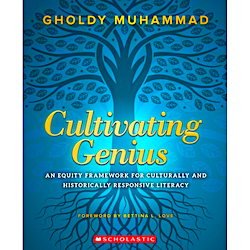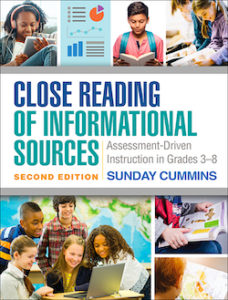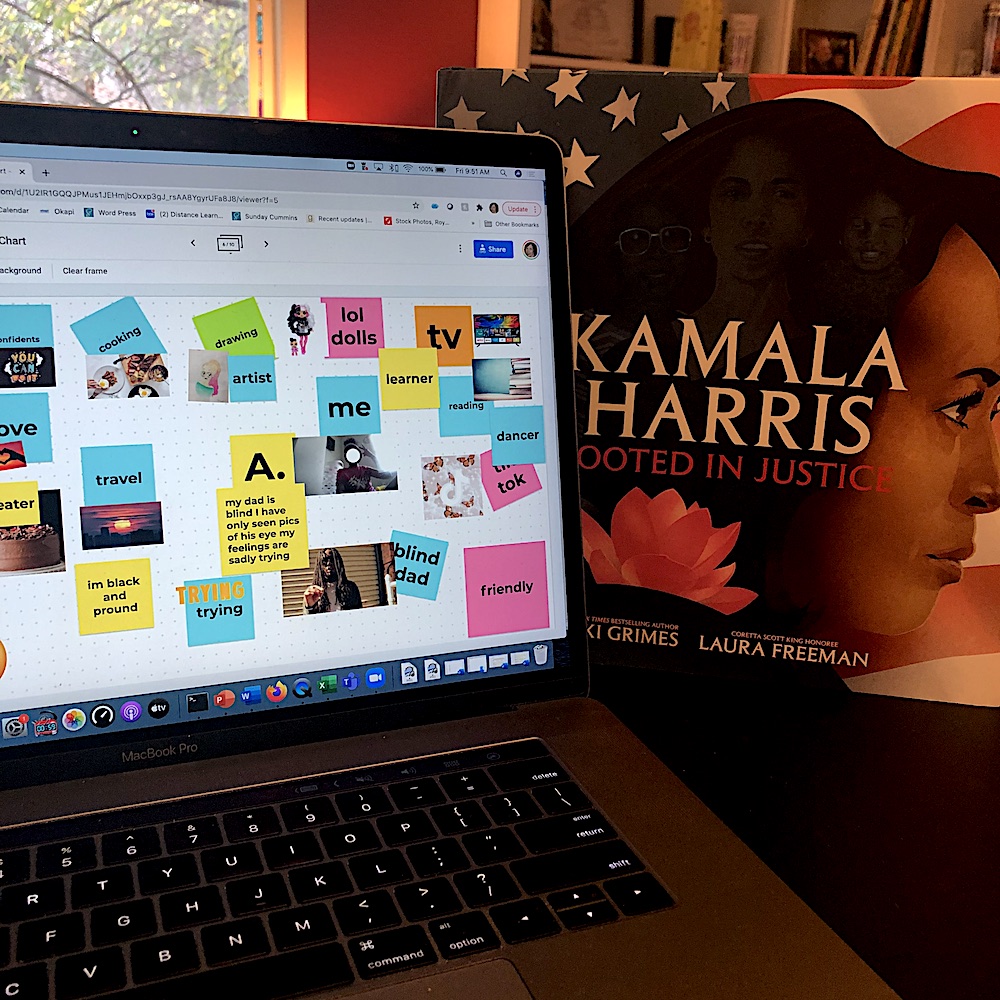Energizing Kids’ Online Learning This Term
By Tara Lash and Sunday Cummins

Tara
While the news about COVID-19 vaccines is promising, many of our students will continue to learn from home for the next few months or longer.
A big question then is this: How do we create and host energizing environments that sustain learning?

Sunday
With this same question in mind, literacy coach Tara invited a small group of intermediate grade girls to be part of a “club” that would read and talk about books together. They agreed to meet three days a week for about 20 minutes per meeting.
While Tara was not their classroom teacher, the students had interacted with her during in-person instruction in previous school years. This was a special opportunity to craft an inviting virtual learning environment.
During Tara and Sunday’s conversations reflecting on the lessons, we came up with the following suggestions for revitalizing remote learning.
Get to know your students again (and better).
Ask yourself, “What else can I learn about my students?” and “What kind of learning experiences can I create to do this?” Knowing our students deeply can help us create stronger instructional pathways for them.
One suggestion is to ask students to create “identity webs” (Ahmed, 2019) as they read and talk about a set of sources on a topic that has some personal relevance for them.
The students in Tara’s group used Jamboard to develop identity webs in conjunction with reading and talking about Nikki Grimes’ book, Kamala Harris: Rooted in Justice (2020).
Conversations about the bigger ideas in this text opened up new opportunities for the students to think about their own identity, asking questions like “How am I courageous?” and “How am I able to persevere?”
After these discussions, the students returned to their identity webs to add additional details. (If your students already created identity webs or something similar last fall, ask them to return to their documents and add additional details in conjunction with reading and talking about new texts or sources.)
Tara learned a tremendous amount about each of the students – learning that helped her think about “cultivating the genius” that already resides in each of them (Muhammad, 2020). What you learn (or learn again) about your students can help you identify topics for inquiry or identify gaps in background knowledge that deserve more conversation.
This is also an opportunity to curate and share a rich set of sources on topics of importance to the students. Knowing a child well may also help you help them connect when they are trying to make sense of a complex text. If a child knows that you know them well and are responding to what you’ve learned about them, then they are more likely to engage in learning.
Create space and time for students to connect
(and then teach in these spaces).
During distance learning, have you happened upon an animated conversation between students? It’s such a delight to hear them “chat” in a world that may feel very difficult right now. Our suggestion is to provide time and space for small groups of students to just talk about whatever they want to talk about and then to use that space to also teach.
When Tara invited the students at her school to meet with her, she called it a “club” of sorts and told them they’d have an opportunity to explore their identities while reading books together. These young people “love to read” and quickly agreed to join.
Our suggestion is to create similar invitations for students to join interest or inquiry groups you have designed or, even better, to create their own groups.
Allow time for some general socializing or chatting before you join the group or as they sign on to the platform and wait for everyone to arrive. While many of us may feel like there’s not enough time for this, the social emotional benefits of this kind of time with their peers will pay off during instruction in countless ways.
The students (all girls) in Tara’s group traded cell phone numbers and texted each other when someone was absent. Tara noticed the sense of community grew as they took ownership of their time together, valuing the discussions and shared work.
Teach with essential questions.
Each time Tara met with the group, there was usually someone absent. The saving grace was the essential question we designed for the group: What is the power in knowing my identity? This high-energy question drove conversations about identity webs and discussions of specific excerpts in Kamala Harris: Rooted in Justice. (This question could also serve as a driving force of conversations around other texts and source material.)
When a student returned after an absence, having an essential question made it easy to review and then draw that student back into constructive conversations. Our suggestion is to develop essential questions based on the interest or inquiry the group is engaged in – or to help groups develop their own questions.
Monitor the time and pace of lessons.
 We know many students are easily bored with on-line instruction and can only retain so much information shared during these experiences. The onus is on us to be clear and efficient if we want them to choose to be actively engaged.
We know many students are easily bored with on-line instruction and can only retain so much information shared during these experiences. The onus is on us to be clear and efficient if we want them to choose to be actively engaged.
Each meeting with the girls in Tara’s group was only 20 minutes. Tara started by sharing the objective of the lesson with a brief description of what they would be doing. The objective (and a clear essential question) kept Tara and the group focused and on task.
Over the course of several lessons, Tara provided simple scaffolds for collaboration and conversation. The students did the heavy work of digging and exploring through close reading and conversation.
While many of us are hoping for a pandemic-free ending to 2021, there is still hard work to do in the meantime. Finding space to reignite energy for learning with invitational groups driven by essential questions, high-interest texts, time to connect and clear, concise lessons may be helpful.
Tara Lash is an Instructional Coach for the Champaign Unit 4 Schools in Illinois. She has over twenty years of experience in education, including, but not limited to, the classroom, Reading Recovery, and literacy interventions. She attended the University of Illinois for her graduate degree in Educational Policy and Leadership.
 Sunday Cummins is a literacy consultant and author and has been a teacher and literacy coach in public schools. Her work focuses on supporting teachers, schools and districts as they plan and implement assessment driven instruction with complex informational sources including traditional texts, video and infographics.
Sunday Cummins is a literacy consultant and author and has been a teacher and literacy coach in public schools. Her work focuses on supporting teachers, schools and districts as they plan and implement assessment driven instruction with complex informational sources including traditional texts, video and infographics.
Sunday is the author of several professional books, including her latest releases, Close Reading of Informational Sources (Guilford, 2019), and Nurturing Informed Thinking (Heinemann, 2018).
She’s is a graduate of Teachers College, Columbia University, and has a doctorate in Curriculum and Instruction from the University of Illinois, Champaign Urbana. Visit her website and read her regular blog posts on teaching information literacy. Follow her on Twitter @SundayCummins.




































I really liked the idea of students creating identity webs. I also liked the idea of giving students time to chat in small groups about topics of interest. I have found that many of the students don’t want to talk in our virtual meetings, so holding a smaller meeting might help them to feel more comfortable with talking virtually. Are any there strategies you use to convince the students to turn their cameras on? My co-teacher and I often are teaching to a walk of icons. We also struggle with the pace of the lessons. Since very few students are interacting in the meeting we are often unsure if the students understand the topic until the test or the quiz when they do not do well. Do you have any suggestions?
I created a “Waiting Room” for my students. I stay muted and keep my camera off, so that they can interact on their own for 5 minutes before class starts. https://www.diaryofapublicschoolteacher.com/?m=0#.YAIqKPc8LDs
I like the idea of the “Waiting room”. Is it part of your regular video meeting?